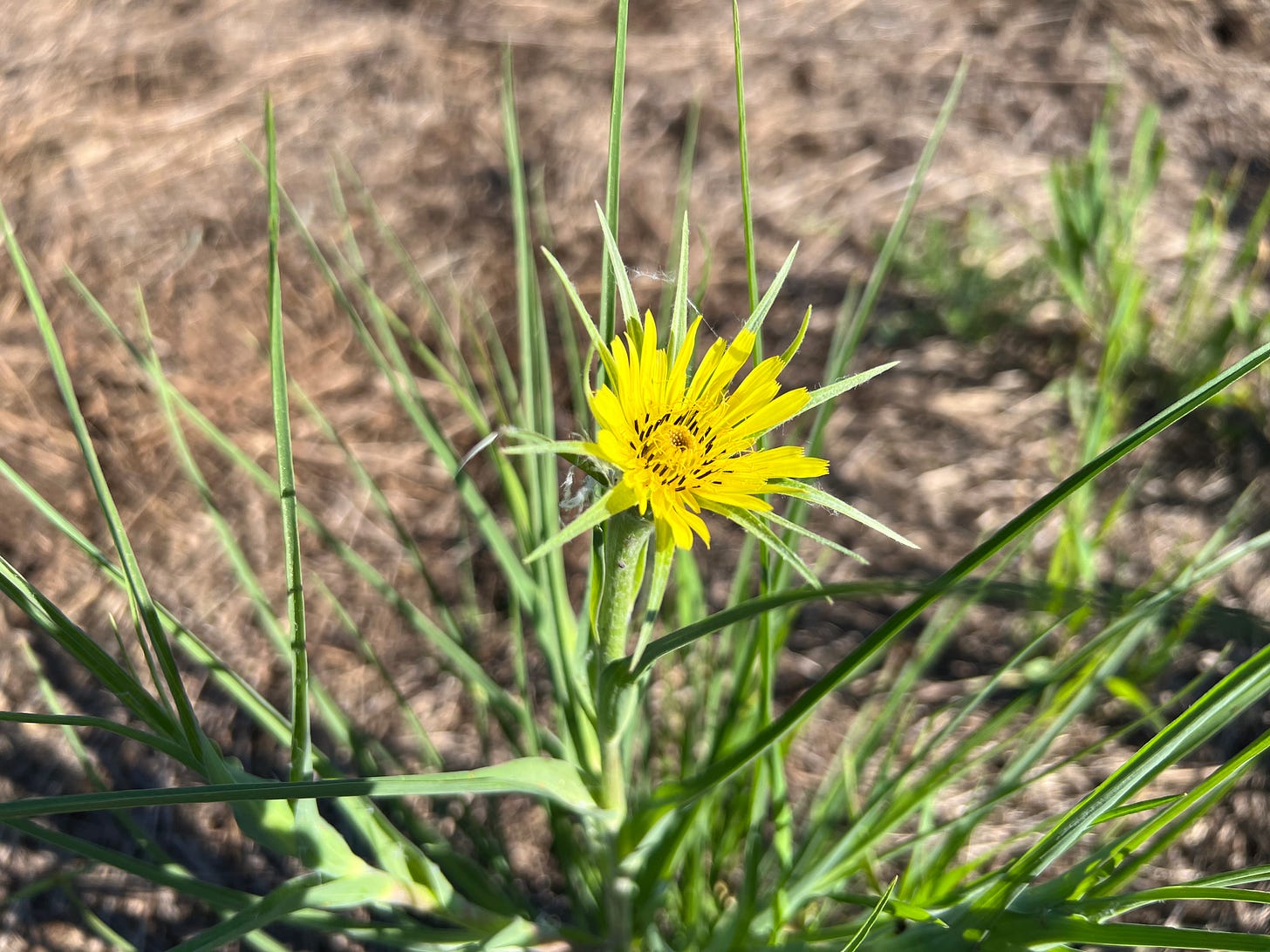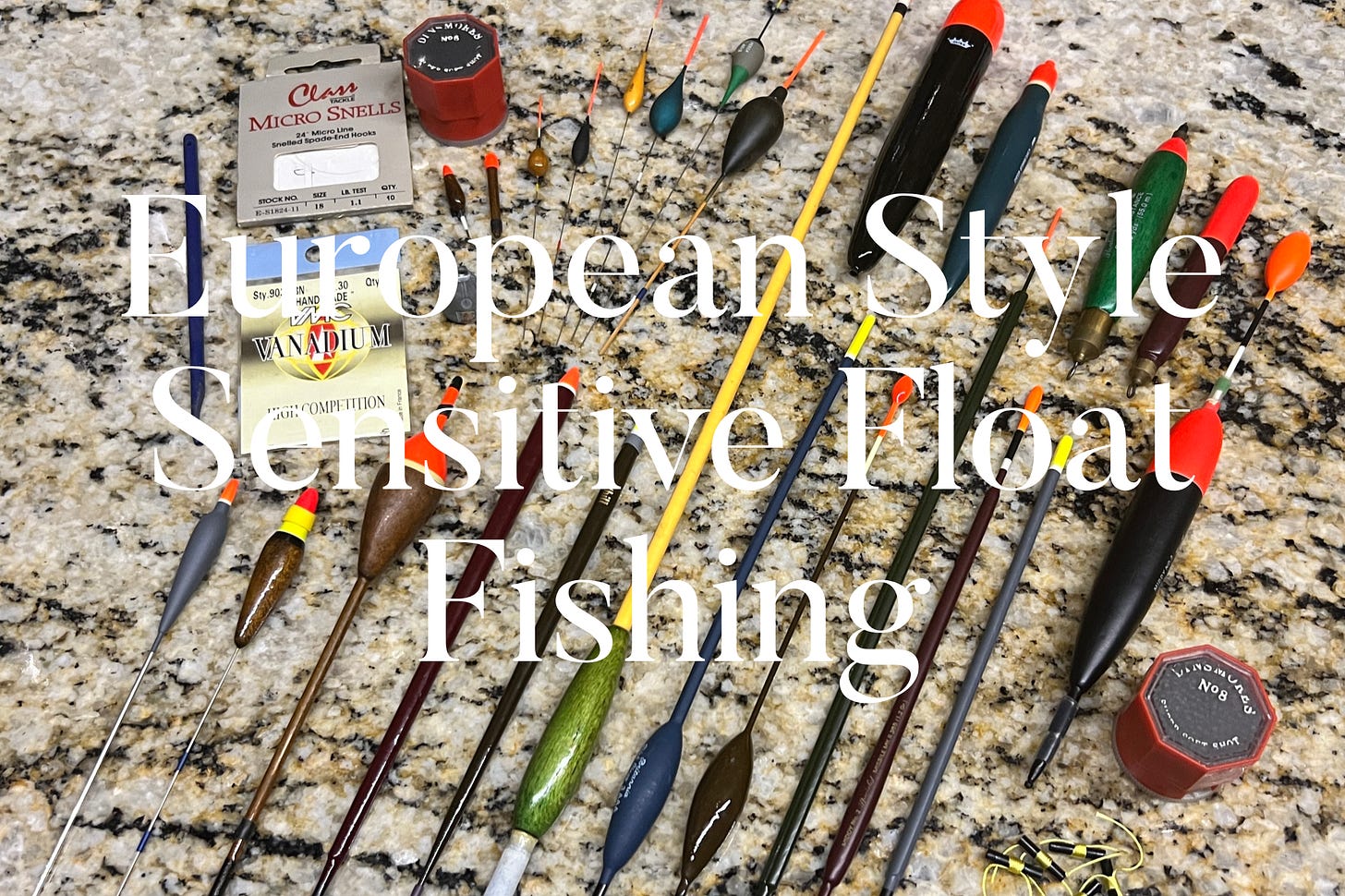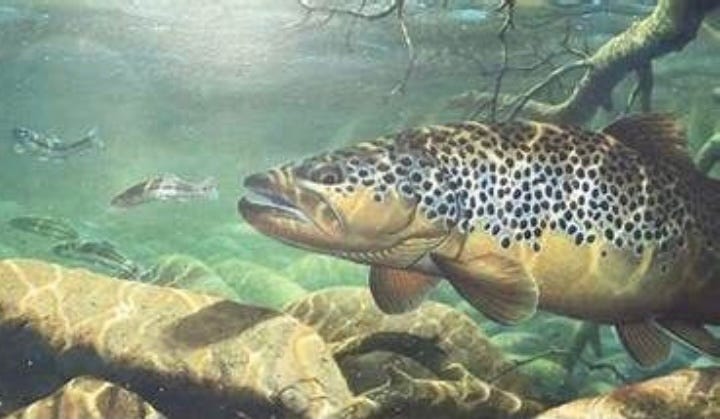January 27th, 2024 Issue
Running Variety Trials / Brown Rice Vinegar-BRV / Goat’s Beard- Tragopogon dubius / Float Fishing Lesson #17 Understanding Prime Lies / Fly Tying Lesson #17 Hare’s Ear Nymph
Running Variety Trials
When I first started farming, I use to do a lot of trials using many different varieties of a certain vegetables. I have grown around three hundred different varieties of heirloom tomatoes, to come to find the best dozen, for our specific situation growing for the restaurant. If you think that is a lot of varieties to try, there are over 6000 non hybrid varieties that are out there. That number is changing every year because new varieties are being developed and old varieties lost.
When you are first starting out, you should make a point of growing several varieties at once of the same type of vegetable, to see how they respond to your specific climate, soil type, pest and disease issues. Some varieties that other people rave about, have not done well here, and vise versa.
One season I put 90 different kinds of heirloom tomatoes in one greenhouse. I transplanted them in March, when it was still cold out, and used my red jars, you see in the seedling greenhouse, next to each plant and layers of floating row covers over them. We had a very unusual cold snap come in and the outside temperatures got down to about 0 degrees. The jars had warmed some from the sun during the day, but I knew it was going to be very cold on the plants. I had thermometers under each layer of cover over the plants so I could monitor what was happening. Under the covers where the plants were it got down to about 30 degrees. This was a test to see what each variety could handle. Out of 90 varieties, about a dozen or so totally died. The rest it was very interesting to see how their genetics responded. Some varieties went on to grow normal, while others I couldn’t prune properly because the plant changed its growth pattern. Other varieties produced one large fruit on it’s first cluster and did not set any other fruits. Acting like it had put all its energy into producing seed as quickly as possible. This was a great learning experience, and helped me isolate genetics that would preform in unusually cold conditions.
Some times trials are for cold hardy varieties, other times it is to isolate varieties that can handle unusual heat. You are attempting to find varieties that are not stressed as much as other varieties. The less stressed a plant is, the less it will deal with pests and diseases.
Now that I am older and have learned to develop some of my own varieties of things, I am not as focused on doing big trials. Now I know how certain varieties respond. I can purchase a new variety and try it, and I have a good track record to compare it with.
Remember though that diversity is the key to resilience. The reason the Irish had their potato famine, was because they had become too dependent on one specific variety, that most everyone was growing. That variety was very susceptible to late blight. If you go to Peru, and see how they grow potatoes, there are hundreds of varieties that are being grown. Having this diverse genetic mix gives them resilience. If one variety does poorly, they have many others to depend on. Man tends to just look for the biggest yielder and mono crop that. That is very unwise.
If your starting a new garden, and you are not familiar with what grows well in your area. You can talk with other growers and try some different varieties to see what does best for you. God bless your efforts!
The Regenerative Homestead Newsletter’s Main Index
This link will take you to a full Index, of all the articles that I have published, organized by topic. Making it very easy for you to go back, and revisit an article that you wanted to review again in the future.
I published this article in a separate newsletter last Tuesday. This link will take you to that newsletter.
If you know someone, that you think would enjoy this newsletter, please let them know by sharing it. Thank you!
Brown Rice Vinegar- BRV
So far we have looked at FPJ and OHN. There is one more ingredient that is in the Maintenance Solution that I need to acquaint you with. That is Brown Rice Vinegar or BRV. This is something that I just purchase from the store. Many people have asked if we can use apple cider vinegar. Master Cho has said yes, but only if we can’t get the BRV. He says the grain vinegar is a very superior product for what we are doing. Once again, you would want to make sure you purchase organic if you can. Any pesticide or herbicide residues will have a very detrimental effect.
For those of you that are familiar with the concept of how some foods that enter our system are acidic, yet once digested becomes alkaline. There is a similar effect that is happening in plants. The vinegar in the solution actually turns alkaline as the plant absorbs and uses it. I don’t fully understand what all is going on here but it works. Having the vinegar in the solution really helps the plants to develop waxy thick leaves that are very healthy. Remember though, that we are adding only a very tiny amount to our sprays. To make a gallon of maintenance solution we are adding 30 milliliters each of BRV and FPJ. The OHN is 15 milliliters of one year old, or 7.5 milliliters of three year old or older. Just to give you an idea of how far this stuff goes. There is 473 milliliters to the pint. You can mix up 15.8 gallons of maintenance solution with the one pint of BRV or FPJ. If you are familiar with foliar feeding, almost 16 gallons will spray a huge area.
Goat’s Beard- Tragopogon dubius
Goat’s beard is very common to find on our homestead. I have them growing in my garden, as well as in the pastures. This is a great plant. When the plant is young, I will collect the leaves for my salads.
You can also harvest the root. As I studied some more I was finding quite a few people that were raving about how good the coffee was from the roasted roots. I am going to try that, Lord willing, this summer. They were saying that they roast the roots for an hour at 175 degrees.
The young flower shoots can be gathered like asparagus, and fried or steamed. They are quite nice. The flowers can also be added to salads as well. There are three different species. One has a purple flower, and the root is said to taste like oysters. The dubius species is what we have, and has the green spikes that extend beyond the flower petals, like you see in my picture. The third species does not have the longer spikes. They are the length of the petals. I believe all three species are edible.
Float Fishing Lesson #17 Understanding Prime Lies
If you are a river fisherman, this lesson will be a very important one for you.
Many years ago the fisheries division, of Michigan’s DNR, did a study on the movements of large brown trout on the Ausable river system. They radio tagged a number of large fish and followed their movements. It was very fascinating to see what they learned. Now this is coming from memory from thirty years ago, so I hope this is accurate. If I remember right, the fish they tagged would move within the mainstream and up the south branch. These fish are solitary. They are not living as a group. One of the things the researchers found is that the fish would stop at the same places as they moved within the river system. With some places being frequented from time to time by all the fish. It was like there were certain rest areas they all preferred to visit. What was so special about these specific spots?
Each of these places, where the largest fish would hold up, are referred to as prime lies. Using the word lie, like lying in wait. These prime lies all had certain things in common. They gave the fish great protection from predators, and had a steady supply of food. There are places out in mid stream, where there is plenty of food, but they are in danger of being seen by predators. These prime lies will be places like deep undercut banks.
The other thing they learned, was the importance of the pecking order. If you have chickens, you know exactly what this means. If a 16” brown trout was the largest fish inhabiting the prime lie. It would hold the most favorable position to receive the food that was coming in. If a larger 20” fish entered the area, the 16” fish would be driven from the lie or it would be forced to drop back to a less favorable position. If you are truly savvy, you will learn to use this information to your advantage. If you see someone catch a large fish in a certain location in the river, and they keep the fish, don’t be dismayed. Another large fish will come and take that spot.
As a float fisherman, you can derive strikes by drifting a large minnow through these prime lies. Often the fish is hitting them out of territorial aggression. I have done this successfully mid day when nothing should have been feeding. In fact I have a funny story that I can share to illustrate my point.
I was fishing one time on the main branch of the AuSable river. It was the middle of the day, and the fishing had been slow. I came around this bend in the river and there were two guys sitting on a deck that actually went over the river a little. These guys were astonished I was fishing during mid day. In fact they were rather snooty about it, as they sat there sipping their wine. One of the guys bragged and said “there is a big trout right under this deck, but you won’t catch him this time of day.” That’s all I needed to hear. I proceeded to put on a larger fly and just flipped it right up along the side of the deck they were sitting on, and let the current take it underneath. It didn’t take long and my rod was alive and water was splashing! I’m not sure what I got a bigger kick out of, the fish I caught or the guys reaction as they went off in a huff!😁 That trout probably wasn’t feeding. It was hitting that fly because it was wanting to drive it out of its territory. The old fly fishermen that taught me this would sit on the bank of his favorite Brook Trout hole and just hold those flies there for quite awhile. He had caught a lot of big Brookies that way.
So it doesn’t matter what kind of fishing you are doing, this is an important bit of information to put in your cap. We are going to talk in the next article about the fact the 90% of the fish, are in 10% of the lake. In a river system it is similar as well. Once you learn to know a river, you will know where these prime lies are, that hold these bigger fish. You have to make an investment of time and observation though to become truly proficient at it.
Fly Tying Lesson #17 Hare’s Ear Nymph
In this lesson we will tie the Hare’s Ear Nymph. This is an excellent general nymph pattern that can be changed to suit different colors and sizes of Mayfly nymphs.
https://rumble.com/vy4gzr-fly-tying-class-lesson-17.html















